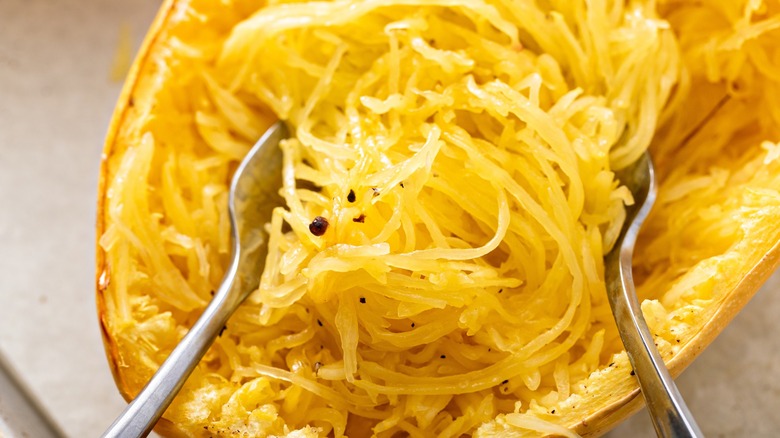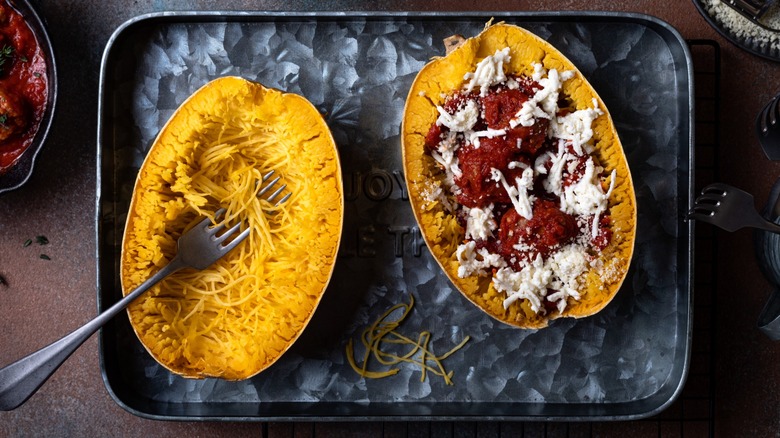How Long To Cook Spaghetti Squash For A Satisfyingly Al Dente Texture
Spaghetti squash has become an especially trendy ingredient for health and gluten-free enthusiasts seeking the twirlable, satisfying texture of pasta from a grain-free source. When cooked, the tender pulp of a spaghetti squash lives up to its name by easily separating into long golden strands that can be tossed with all types of pasta sauce. Spaghetti squash requires minimal preparation because you can roast them in halves without removing the skin.
In fact, the skin can even double as a pasta bowl in dishes like these spaghetti squash lasagna boats or this spaghetti squash with sage and walnuts recipe. The goal with spaghetti squash is for it to break down into discernable noodles that hold their shape. For that desired al dente pasta texture, these giant squash halves need considerably less time in the oven than you might think. The general consensus is to roast oiled and seasoned spaghetti squash halves cut-side down for between 35 and 45 minutes at 400 to 425 degrees Fahrenheit.
If you cook the halves for too long, they will become too tender, thwarting the separation of the flesh into spaghetti noodle look-alikes. Other factors like size, freshness, and differences in appliances also affect spaghetti squash cooking times, so it's best to err on the side of caution and begin checking the doneness of your squash at the shortest end of the cooking time range. A fork test will indicate that your squash is ready; a fork should be able to pierce the skin of the squash with minimal effort.
Preparation and cooking tips for spaghetti squash
High heat and shorter cooking times are important to achieving al dente spaghetti squash, but you can also take steps pre and post bake for the most successful results. Salting the spaghetti squash halves and letting them sit for around 15 minutes before oiling and seasoning will draw excess moisture out. Since one of the most common disasters when it comes to spaghetti squash is mushy, watery pulp, ridding it of as much moisture as possible before roasting it gives you the best chances for that coveted al dente texture.
A light brushing of oil on the flesh of the squash with a few basic seasonings are all that's needed before placing it cut-side down on a parchment-lined baking sheet. Over-saturating the spaghetti squash with oil will create a barrier for moisture to escape, resulting in mushy pulp. Once you've pulled the squash out of the oven, you should take a fork to the pulp while it's still warm.
Before creating the strands, run a spoon under the flesh, flush up against the skin. Then, fluff it with a fork. While roasting squash halves is the most conventional way, you'll get the longest strands and reduce cooking times by cutting the squash into rings before roasting them. The grain of a spaghetti squash runs circularly around its horizontal perimeter. So, fluffing roasted rings in a spiral motion with the fork produces mounds of the longest, most twirlable spaghetti strands in perfect individual portions.

